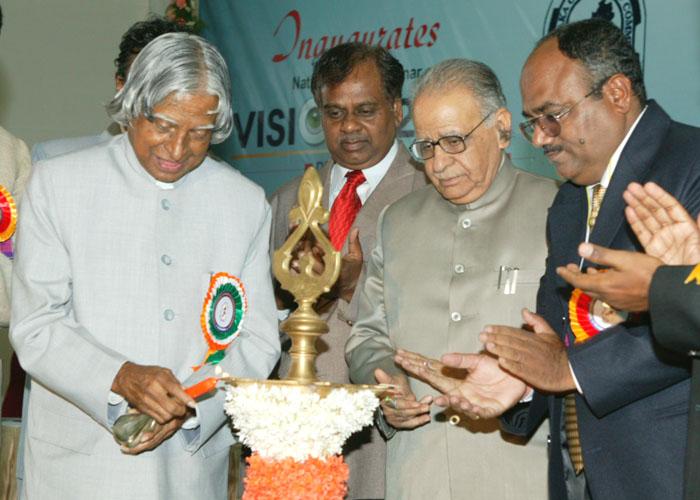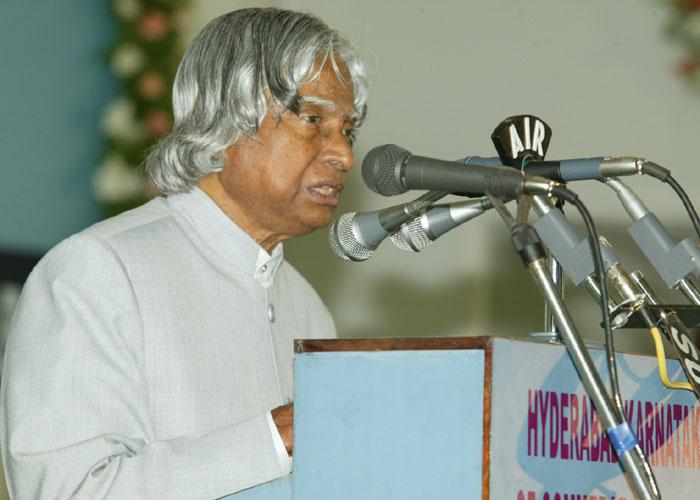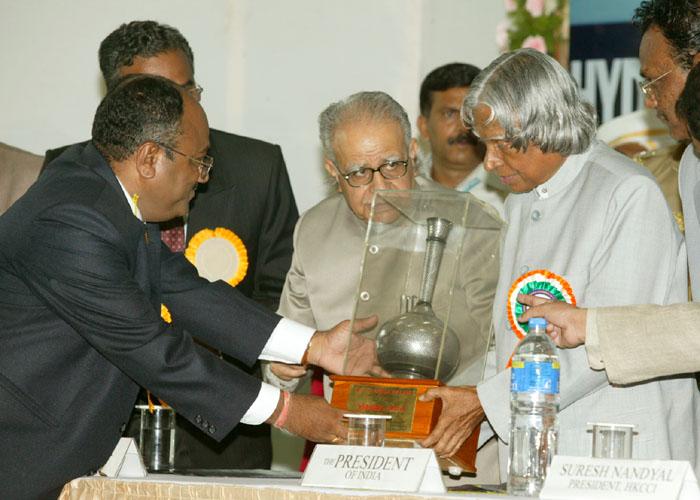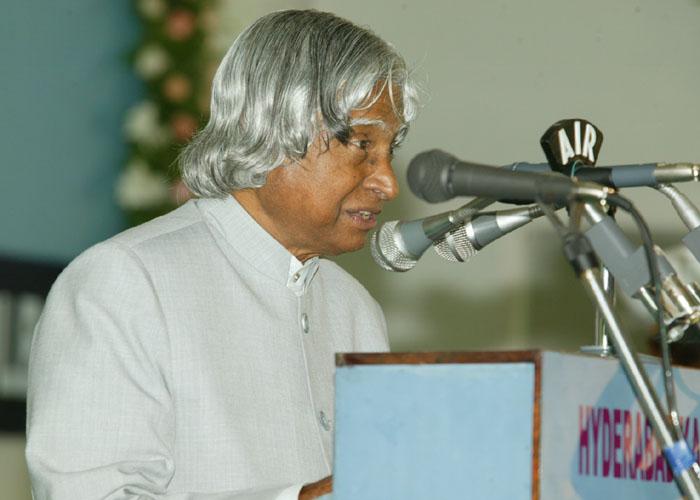Address At The Inauguration Of Seminar On Vision 2020 On Resurgent Rural India, Gulbarga
Gulbarga : 23-09-2004
PURA ?a Model for Rural Development
I am happy to participate in the inauguration of the Seminar on Vision 2020 on Resurgent Rural India organized by the Hyderabad Karnataka Chamber of Commerce and Industry in association with members of state level industrial agencies. My greetings to the organizers, industrialists, academicians, other participants and distinguished guests.
Characteristics of Rural India
Nearly 700 million people of India live in the rural areas in 600,000 villages. Connectivity of village complexes providing economic opportunities to all segments of people is an urgent need to bridge the rural-urban divide, generate employment and enhance rural prosperity. Repeating what we did before for several decades with more of the same, may not be the way to proceed further. We need to innovate to increase connectivities to the villages making clusters out of them even while retaining their individualities.
Regions for economic development
For this discussion, I have grouped the states of India into seven regions, since economic development is a function of core competence, specific natural resources, climatic conditions and the cultural heritage of a particular region. I consider that the holistic planning and development has to be region based, since rivers are region based, hills are region based, climate is region based, terrain is region based and culture is region based and hence the solutions to the problems and development schemes also need to be region based. The major regions in the country are divided based on its core competence. The core competence, challenges, needs and the missions for the seven regions are depicted here:
Northern Region - Agriculture, Tourism, light Engineering manufacture, Herbal products
Desert Region - Power generation, milk and dairy products
Gangetic Region - Agriculture, Agro-food,flood water harvesting, value addition to mineral wealth, manufacturing and tourism.
North-East Region- Hydropower, herbal/natural Products, cottage/heritage Industries,harnessing floods Highvalue eco-tourism
Deccan Region - Industrial base, Pharma, Sugar, automobile Industry and tourism
Southern Region - Knowledge products,bio- Technology, automobile Parts and tourism.
Coastal Region - Fisheries, water generation For drinking and irrigation through sea water desalination process, sea based eco-tourism.
I am convinced that the economic development of India would not be complete unless we uplift the lifestyle and living conditions of our people living in the rural areas. Many of the rural areas have natural resources and hardworking people. But still the results of modern economic development have not reached most people. It can happen only through improving the skill level and creating employment opportunities for the youth, and structured marketing for the products of the regions to ensure balancing of the demand and supply. One of the most important ingredients for development of regions is the evolution of mission driven management structure.
The approach is based on my visits to urban and rural areas of almost all the states and union territories and also my recent visit to Tanzania and South Africa. I also had discussions with number of teams. Unified planning, decentralized execution with empowerment of the local bodies will lead to overall development of the regions.
Hyderabad Karnataka Chapter
The Hyderabad Karnataka Chamber of Commerce and industry has five districts namely Bellary, Bidar, Raichur, Koppal and Gulbarga. When will they become the most sought after districts and towns like Bangalore, Mysore, Hyderabad. They all need development and industrial base. The five districts have a population of over one crore with seventy lakhs living in rural areas. This is a good sample representative of the nation. We need an integrated development of all the five districts, in short bringing the urban facilities in rural areas. The developments do not know state or district borders. The core competence of the region is agriculture, the area is drought prone. But it has iron ore, manganese and there are three rivers with its tributaries flowing in this region, they are Krishna, Thungabhadra and Bhima. Some areas are suitable for Sugar cane cultivation. This comes under the southern region discussed earlier. Now I am going to discuss the vision that we have for the nation.
< p class="title1"> Vision 2020
Our nation is going through a major challenge of uplifting of 260 million people who are below the poverty line. They need habitat, they need food, they need health care, and they need education and employment and finally resulting into a good life. Our GDP is growing at more than 8% per annum. Whereas, the economists suggest that to uplift the people below poverty line, our economy has to grow at the rate of 10% per annum consistently, for over a decade.
Integrated action: To meet the aspirations of one billion people, we have the mission of transforming India into a developed nation. We have identified five areas where India has a core competence for integrated action:
(1) Agriculture and food processing
(2) Reliable and Quality Electric power, Surface transport and Infrastructure for all parts of the country
(3) Education and Healthcare
(4) Information and Communication Technology
(5) Strategic sectors.
These five areas are closely inter-related and if well done would lead to national, food and economic security.
The integrated actions for development of each of the seven regions are: Education with value system for all leading to entrepreneurship and employment opportunities, Healthcare and Nutritional Security for all, containment of population growth rate to be within a small band and excellent infrastructural facilities including water and energy to be addressed on priority for maintaining the momentum of the economic growth. Development of agriculture, agro-food processing industries and down stream marketing network would be useful in providing good returns to the farmers. Progressive shift of the workforce from agriculture to manufacturing sector and to the service sector should take place through well conceived industrial growth. Doubling of agricultural production in a decade through technological and managerial inputs in reduced area and training of the farmers in soil enriching, pre and post harvesting and marketing will lead to reduced deployment of manpower in the agricultural sector. The manpower released in this process will be available for deployment in manufacturing and service sectors.
Now let us study the changing pattern of GDP and employment.
Changing Pattern of GDP and Employment
Fundamentally our economic growth strategy would be to enhance wealth generation from the services sector. Our vision for 2020 has set a target for a service sector contribution to be 64 % of the GDP whereas in 1980, it was in the region of 36%. We have crossed the 50 percentage mark for the service sector. While this is happening, the contribution of agriculture is gradually going down. In order to effectively distribute the agricultural produce and make optimal use of them we need to have high quality expertise in food processing and supply chain management. It will ensure a balanced contribution to the GDP from the agricultural sector including food processing sector which will reach a value of 12% by the year 2020. Similarly the contribution of manufacturing sector i.e industries has to further increase.
Rural prosperity through connectivities
About Rs. 20000 crore are allocated for rural development across the country every year and also many ministries in the state and center are allocating funds for the development in rural India. The departments and the organizations established to help farmers; agricultural workers and artisans should aim to satisfy the aspirations of the people and understand the realities facing the farmers and provide people friendly services to them. The issues concerning farmers have to be addressed in an integrated way by understanding the core strength of villages and providing sustainable and viable connected solutions. The essential needs of villages today are continuous supply of water, power, road, sa nitation, healthcare, and education with right skills, employment and sustained income for the family.
Essential Connectivities: The integrated methods, which will bring prosperity to rural India through Providing Urban facilities in Rural Areas (PURA) consisting of four connectivities: the physical connectivity of the village clusters through quality roads and transport; electronic connectivity through tele-communication with high bandwidth fiber optic cables reaching the rural areas from urban cities and through internet kiosks; knowledge connectivity through education, vocational training for farmers, artisans and craftsmen and entrepreneurship programmes; these three connectivities leading to economic connectivity through starting of enterprises with the help of banks, micro credits and marketing the products.
Each village clusters depending upon the region will cost between Rs.100-200 crores. After initial short-term employment during construction etc., we may have to plan for initiating actions for providing regular employment opportunities for 3000 people. If the industrial parks are marketed well, they can generate employment opportunities in service and support sector for about 10000 people. We need to promote entrepreneurship in the rural area in a mission mode.
PURA Enterprise and Business model
The economic connectivity will generate a market and the production establishments for servicing the market. The PURA has all the dimensions to become a business enterprise. The PURA entrepreneur has to have the knowledge for evolving a business plan with banks and also create infrastructural support such as educational institutions, health centres and small scale industries, transportation services, tele-education, tele-medicine, e-governance services in the region integrating with the governmental rural development schemes such as road, communication and transport. Can HKCCI play a role to create a PURA enterprise and entrepreneur with the required business and managerial skill?
PURA Enterprise: A large numbers of SSI units are members of HKCCI. The SSI sector has experience in managing the small scale industries of different types in various regions. This sector is widespread in the country and is a promising candidate for becoming the chief and managing the PURA complexes in an integrated way. PURA enterprises can undertake management of schools, health care units, vocational training centres, chilling plants, silos and building a market, banking system and the regional business or industrial units. A new management style has to emerge for managing such type of PURA enterprises. This new PURA enterprise needs partnership from the bank, from the Government and also from the private entrepreneurs. Since, the HKCCI is an umbrella institution for the small scale industries; they can start a movement in the country for evolution of new PURA enterprises in this region.
Structural Support for PURA:HKCCI can be a facilitator for creating this entrepreneurship scheme through the support of the banking system and the marketing system. The regional representatives of HKCCI should identify the PURA complexes in their areas and adopt them right now, so that they can be developed in an integrated way. They should create a holistic plan of product, skill and entrepreneurship. Determination of products should be done on the basis of the core strength of the region and the availability of raw materials and infrastructure. Once the product is determined it will also involve infusion of new technologies for making it attractive for both national and international market and also productivity enhancement. After establishing the process and methods a vocational training package needs to be established for improving the skill sets of the local population. This is also the time for developing entrepreneurs with leadership qualities who will then create and nurture the enterprise. The selection of entrepreneurs should be preferably done from the higher educational institutions in the region. This will enable creation of the village level industries simultaneously with the establishment of connectivities in the region.
In brief, HKCCI should generate the business plan for PURA and evolve methodologies for creating a model that would:
a) Create a data base of core competencies in the chosen region.
b) Estimate the cost of implementing PURA
c) Measures of quantitatively establishing the economic prosperity of people before and after PURA is implemented
d) Economic returns and self sustainability
I am sure with your experience in small scale industry and national development; you can make a project implementation document that will attract business enterprises towards investing in PURA and make PURA a socially relevant and economically feasible project.
Conclusion
I would call upon all the members of this organization to continue to maintain the high traditions set by your founding fathers by keeping your sight on the national development. Towards this end I would request HKCCI to consider undertaking following tasks on mission mode:
1. HKCCI can conduct a survey in different regions and suggest the villages to be clustered for effective PURA complexes and also determine the total number of viable PURA complexes in the region and evolve a database for various components of PURA model.
2. HKCCI as on organization can create a movement to propagate the concept that PURA is a viable business proposition.
3. HKCCI can help the small scale industrialists to prepare a business model for a PURA Enterprise in their region taking into account of the core strength of the region.
4. HKCCI has to become a facilitator for integrating the role of the Small Scale Industrialists, State and Central Governments agencies, and NGO?s and Educational institutions for integrated establishment of the PURA enterprise.
5. HKCCI should enable generation of a new breed of entrepreneurs to provide leadership for PURA mission. Assist the entrepreneurs in making the PURA enterprise as a self supporting business unit.
For successful implementation of all these missions, quality of creative leadership is very vital. The creative leadership is exercising the task to change the traditional role from commander to coach, manager to mentor, from director to delegator and from one who demands respect to one who facilitates self-respect.
I wish you all success in your mission. May God bless you.




